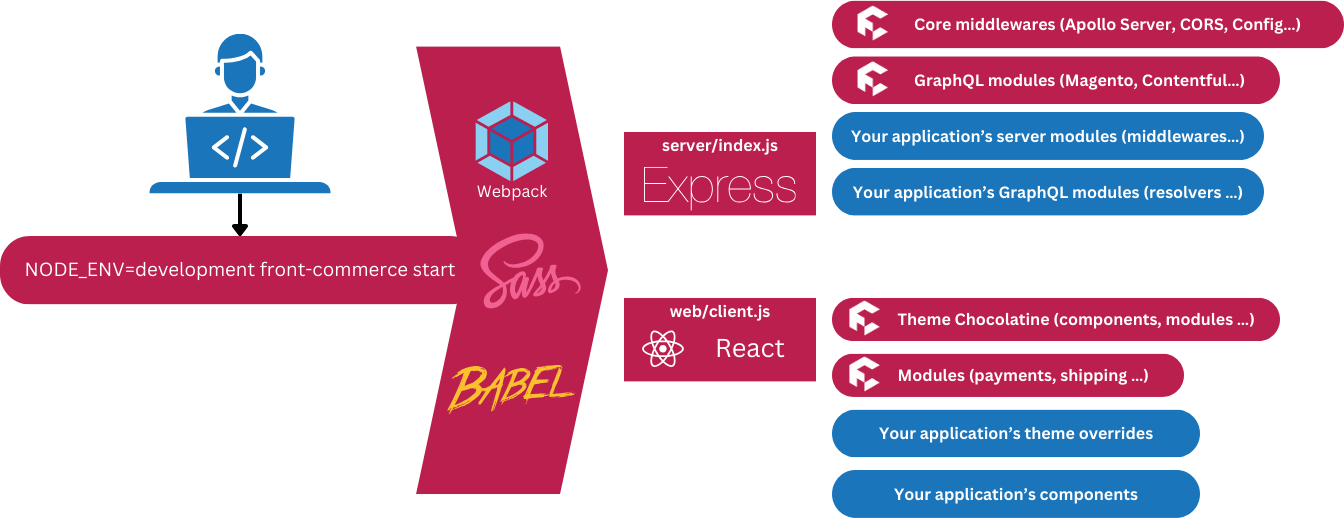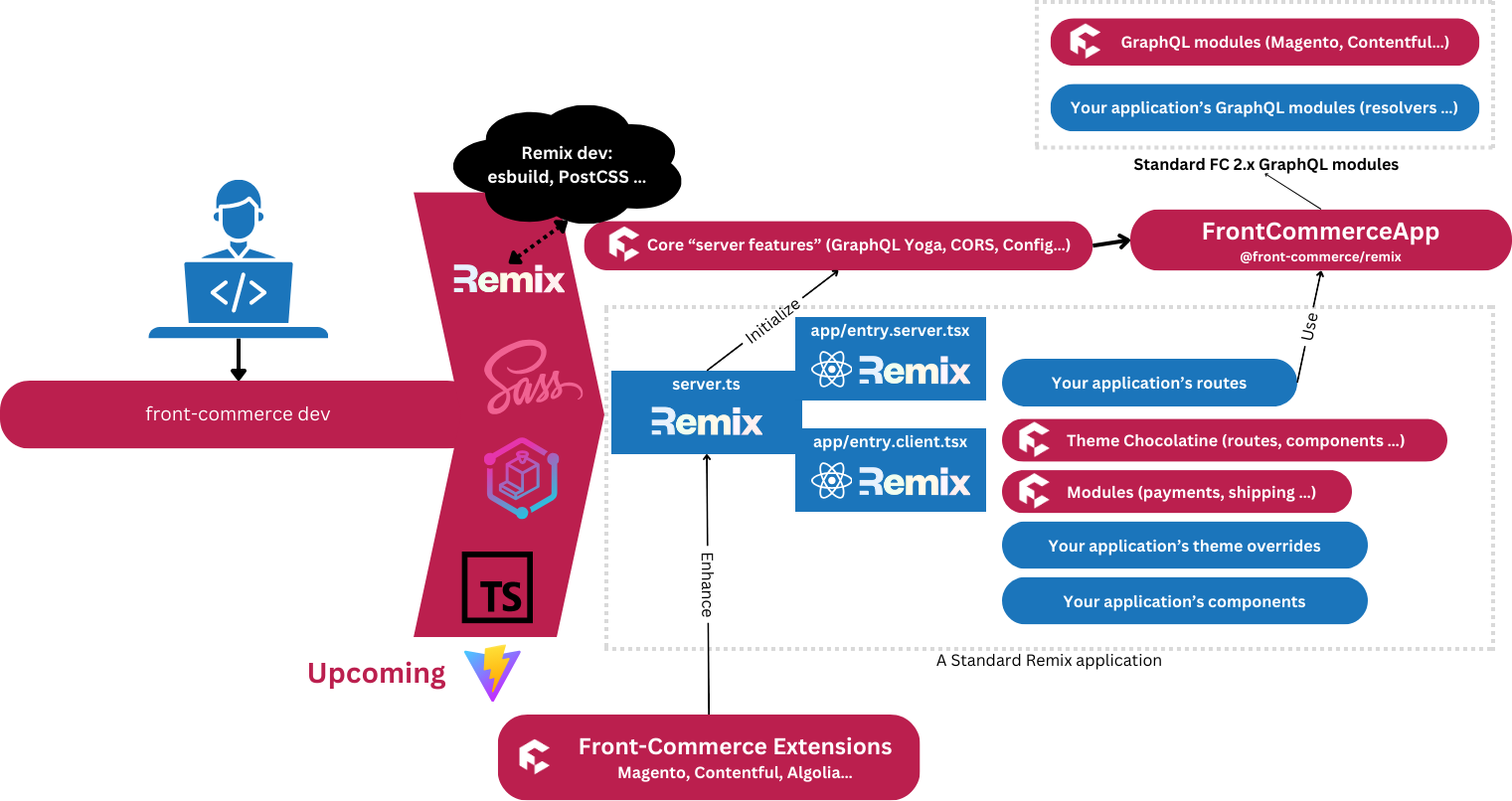Remix extended for Composable Commerce
Since 2016, Front-Commerce has been dedicated to supporting teams that operate in the Headless and Composable commerce space. Being among the first Frontend-as-a-service providers presented us with its unique challenges, but we have built solid foundations over the years.
Now, with Front-Commerce v3, we are excited to bring all our experience from the past seven years to the Remix ecosystem.
Read more to discover how Front-Commerce extends Remix to incorporate all the features available in Front-Commerce v2.
This article is part of our Developer Guide series. We're publishing a new articles all year. Stay tuned!
Front-Commerce 2.x: the “all-inclusive” solution
When Front-Commerce was created, React and GraphQL were still evolving with limited frameworks for developers to use. Most of the ecosystem relied on Create React App for client-side rendered applications or Gatsby for static site generation.
Our team understood that server-side rendering was a more accurate option for eCommerce storefronts, which is why we made it a core feature of Front-Commerce.
With the release of Front-Commerce 2.x, we integrated all the necessary features you would need into the core: from bundling and server-side rendering, to routing and HTTP caching.
To illustrate, the components of a Front-Commerce 2.x app look like this:
Key highlights of a Front-Commerce 2.x:
- Front-Commerce must be an Express.js Node application.
- During server-side rendering (SSR), developers can only use Front-Commerce's extension points to access server-side-rendered data.
- Front-Commerce only supports the addition of Express middlewares at specific extension points.
- Hydration is managed by Front-Commerce with some restrictions such as inability to register global React context providers
Front-Commerce 3.x: leveraging Remix
Fast-forwarding to 2023, the industry has seen the emergence of several stable and popular frameworks, with Next.js and Remix at the forefront. After careful consideration, we decided to adopt Remix for several reasons previously outlined in another article.
Our priority has always been to ensure that the development experience with Front-Commerce is seamless and consistent with how these technologies can be used outside of Front-Commerce. This approach not only ensures that agencies can efficiently onboard new developers, but also guarantees that projects developed with Front-Commerce are future-proof and can evolve with the industry.
To achieve this, we've made a fundamental change: we made Front-Commerce usable in any standard Remix applications. This is a change for developers familiar with Front-Commerce 2.x, but it means that developers have more freedom and autonomy.
In short: you own your Remix application, Front-Commerce brings the batteries powering your composable storefront.
Technically, the components of a Front-Commerce 3.x app look like this:
Key points to take away from this:
- Your application is based on a standard Remix app.
- Launch your application using Front-Commerce's CLI, which takes care of running additional tools such as GraphQL Codegen, Sass compilation, TypeScript, and more.
- Front-Commerce provides additional features such as Extensions, theme management, configuration, and GraphQL unified schema.
- To initialize Front-Commerce, certain key components such as Remix’s
server.tsmust bootstrap it. - You interact with a
FrontCommerceAppfrom your loaders and actions to use Front-Commerce. - The skeleton contains a boilerplate: it is completely transparent when creating a new application.
- Currently, Front-Commerce only supports
@remix-run/express, but it has been designed to be easily portable to other deployment targets (Cloudflare, Netlify, Vercel, etc.) in the future.
How do you feel about this?
We’re aware that it may not be totally clear for you yet. We recommend to keep this in mind while reading the rest of our Advent Calendar Series that will dive into each component, and provide practical examples of using every Front-Commerce feature in a Remix application.
If you have any questions or concerns, feel free to keep the conversation going: we’ll be happy to answer!
Join us again for the next article in our Developer Guide series!


